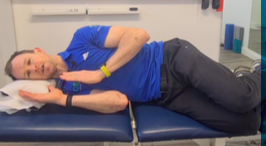How to release a 'trapped nerve'?
The title of this blog is purposely misleading.
It is to help you recover.
We hear this phrase a lot…
“My nerve is trapped”, “I have a pinched nerve for the last 2 years”.
Nerves don’t get “trapped” and even believing that your nerve is trapped is likely to make your situation worse.
Let’s wind back a little.
What are nerves?
Let’s keep it simple here. Our main nerves are tissues that send electrical signals that help you feel sensations and move your muscles.
Our nerves run out of our spine and through most knucks and crannies our bodies.
What does nerve pain feel like?
Nerve pain can be quite varied. It is often a constant achy/burning sensation that can also present with sharp/shooting pain. Oftentimes, there can be pins and needles and/or numbness that refers down the arms or legs. There can be sensations of heaviness or deadness in the limb and even significant loss of strength.
If my nerve doesn’t get trapped then why is it sore?
Nerve pain can present for various reasons. The most common reasons are:
- Stretch – nerves can be overstretched which often happens during an acute traumatic incident like a car crash or a tackle in rugby. These are what we call traction injuries.
- Strain – nerves can become irritated and possibly inflamed when the strain that they are used to tolerating is exceeded. This can be an acute event like after washing the windows of the house for the first time in a few years or over time, like a desk worker with wrist hand pain and tingling.
- Compression – nerves can become compressed. Yes, compressed but not trapped. We often compress our nerves. Like when we sit down for long periods, or when you wake up from sleeping in that awkward position and your arm is dead and/or tingly.

Compression is often the most likely presentation of these, so let’s talk more about these compressed nerves and what to do about them.
It is correct to say disc bulges, spine degenerative change and other structural changes can cause this compression, however these are more often than not present in people who have no pain or nerve symptoms whatsoever.
The nerve is generally only compressed in certain positions. So, the nerve is not trapped it is most often just being compressed for too long or too often and so becoming irritated, inflamed and if you don’t act accordingly even temporary damage.
So how can you help this intermittently compressed/irritated nerve?
- Well the very first thing we need to do is stop irritating it. The most common incidences we see are:
- Poor sleeping positions
- Poor positions/postures while sitting
- Poor positions/postures during physical tasks or exercise
- Repeatedly moving the body into the irritating position thinking you are stretching it when you are just further compressing and irritating it

2. The next step is to assess for any other causes, like reduced mobility. For example, reduced mobility in your upper back can often contribute to your neck being put into a position when nerves are more likely to be compressed/irritated.
3. Hands-on treatment can be very effective in increasing mobility in these stiff areas as well as reducing muscle tension/spasm around the irritated nerve. There are also effective nerve-related treatment techniques that can immediately reduce pain.
4. Treatment can be temporary unless you back it up with exercise. With the above example, a stretch for the upper back may be needed along with a nerve mobility exercise to help reduce pain and speed up recovery.
Nerves love movement. So general exercise and activity can help too. As long as it doesn’t irritate the nerve.

All of the above, combined with time almost always does the trick. It is advised to always try this approach before trying other more invasive treatments like injections or surgery. Often these don’t address the underlying cause.
Nerve pain can be very erratic and irritable so we rarely give specific advice without an assessment of what exactly is going on and why.
If you have any questions about your issue, don’t be afraid to get in touch. Or try our Free Strategy Sessions.